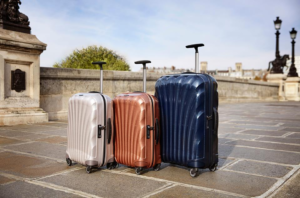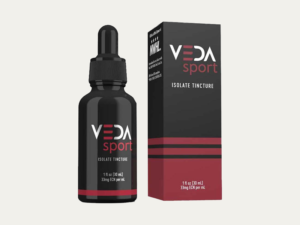Understanding the Benefits of Closed-Cell Spray Foam in Seattle Homes

Closed-cell spray foam is rapidly becoming one of the most robust and reliable insulation options available for residential properties—particularly in moisture-prone regions like Seattle. Known for its high density and superior ability to resist water and air infiltration, this form of spray insulation doubles as both an insulator and a vapor barrier. Its durability and performance make it especially valuable in protecting homes from Seattle’s wet weather patterns and fluctuating temperatures.
What sets closed-cell spray foam apart is its unique composition and structure. Unlike more porous materials such as fiberglass or cellulose, it creates a dense, continuous barrier that seals gaps, cracks, and joints—reducing energy waste and enhancing long-term structural integrity. This is critical in older homes, new construction, and retrofit projects alike. Whether you’re dealing with crawl spaces, basements, or exterior-facing walls, closed-cell spray foam provides a long-lasting solution that improves home comfort, safety, and energy performance.
In this article, we’ll explore the material’s key advantages, compare it to other insulation types, dive into technical performance metrics, and highlight essential pre-installation considerations—all with a focus on what makes it ideal for the Seattle region.
Why Closed-Cell Spray Foam Excels in Damp Climates
Seattle averages more than 150 rainy days a year, and homeowners frequently face challenges related to moisture intrusion, condensation, and poor indoor air quality. Closed-cell spray foam addresses these issues head-on. With a rigid cellular structure, it resists water vapor penetration and significantly limits the risks associated with mold growth and structural rot.
Key Advantages in Wet Environments
- Moisture Resistance: Closed-cell foam acts as a water-impermeable layer, helping to preserve framing and substructures from mold and decay.
- Superior R-Value: With thermal resistance ratings of around 6.0 to 6.5 per inch, it performs exceptionally well in small or hard-to-reach areas.
- Structural Reinforcement: The material adds strength to walls and ceilings, improving resilience against high winds and seismic activity.
- Comprehensive Air Sealing: Eliminates drafts and leakage paths, enhancing HVAC efficiency and reducing energy bills.

Bonus Tip: Homes in Seattle’s older neighborhoods often lack modern framing dimensions. Closed-cell foam’s efficiency per inch helps meet modern energy codes without invasive structural modifications.
Comparing Insulation Types for Seattle Homes
| Insulation Type | R-Value per Inch | Air Sealing | Moisture Resistance | Vapor Barrier | Best Use Areas |
|---|---|---|---|---|---|
| Closed-Cell Foam | R-6.0–6.5 | Excellent | Excellent | Yes | Crawl spaces, basements, exteriors |
| Open-Cell Foam | R-3.5–4.0 | Excellent | Moderate | No | Interior walls, attics |
| Fiberglass Batt | R-3.2–3.5 | Poor | Low | No | Standard framed walls |
| Cellulose (Dense) | R-3.5–3.8 | Moderate | Moderate | No | Retrofit wall cavities |
| Mineral Wool | R-4.0 | Moderate | High | No | Fire-rated assemblies |
Bonus Tip: Always consider the insulation’s performance after water exposure. Closed-cell foam will not retain moisture, making it ideal for basements and areas near ground level.
Technical Performance Metrics
| Property | Closed-Cell Spray Foam Value |
|---|---|
| R-Value | 6.0–6.5 per inch |
| Perm Rating (vapor) | <1 perm |
| Compressive Strength | ~25 psi |
| Expansion Ratio | 30:1 |
| Density | ~2.0 lb/ft³ |
Closed-cell spray foam’s technical data confirms its ability to act as both insulation and a durable vapor barrier. Its high compressive strength and low perm rating make it particularly suited for applications in regions with high rainfall or humidity.
Things to Consider Before Choosing Insulation
1. Ventilation Compatibility
Closed-cell spray foam creates an airtight envelope, which makes mechanical ventilation essential. Seattle homes, particularly older ones, may require the addition of HRVs (Heat Recovery Ventilators) or ERVs (Energy Recovery Ventilators) to maintain healthy indoor air exchange.
2. Code Compliance and Rebates
Washington State’s energy code supports high-efficiency materials like spray foam when properly installed. Additionally, local utility companies, including Puget Sound Energy, may offer incentives or rebates for qualifying insulation upgrades.
3. Site-Specific Climate Factors
Homes near coastal zones, riverbeds, or shaded, low-lying areas experience more moisture exposure. Closed-cell spray foam offers superior performance in these microclimates by minimizing condensation and preventing air leaks.
4. Application Zones
Best-suited for areas that are hard to insulate conventionally:
- Rim joists
- Crawl space walls and floors
- Basement foundations
- Cathedral ceilings and rooflines

Bonus Tip: In mixed-humidity seasons like spring and fall, homes with closed-cell spray foam retain stable indoor temperatures more effectively, reducing reliance on heating or cooling.
Common Homeowner Questions
- Can this insulation help eliminate cold floors in winter?
Yes. Closed-cell foam is highly effective in crawl spaces and under floors, where it blocks both air leakage and ground moisture. - Does closed-cell foam help reduce sound transmission?
Somewhat. While not as acoustically absorptive as open-cell foam, it still offers minor noise-dampening benefits. - Is it possible to apply it over other types of insulation?
Not always. Most professionals recommend removing existing insulation to ensure proper adhesion and performance. - Will it shrink or settle over time?
No. Closed-cell foam maintains its shape and insulation value for decades without sagging or compressing.
Frequently Asked Questions About Home Insulation
Q1: Is spray foam insulation safe after installation?
Yes. Once cured, closed-cell spray foam is inert, non-toxic, and emits no harmful off-gassing, making it safe for indoor environments.
Q2: What’s the primary difference between vapor retarders and vapor barriers?
A vapor barrier, like closed-cell foam, fully resists moisture passage, while a vapor retarder allows limited vapor diffusion.
Q3: How long will this type of insulation last in a home?
Closed-cell foam typically lasts 30 to 50 years or more when properly installed and protected from UV exposure or mechanical damage.
Q4: Can better insulation reduce the size of HVAC systems?
Yes. Improved thermal envelopes often allow for smaller, more efficient HVAC systems, lowering upfront and operational costs.
Q5: Are there any sustainability concerns with spray foam?
While it has a higher embodied energy compared to natural fiber options, its long-term durability and new low-GWP blowing agents improve its overall environmental profile.
Finding the Right Insulation Expertise
Choosing insulation for a Seattle home goes beyond basic energy efficiency—it’s about protecting the structure, maintaining comfort, and navigating the region’s unique moisture challenges. Closed-cell spray foam stands out for its moisture resistance, thermal performance, and structural benefits, particularly in basements, crawl spaces, and walls facing the elements.
For homeowners seeking professional guidance or services like expertise in energy-efficient insulation, Cascadia Spray Foam of Seattle is a provider specializing in spray foam solutions tailored to the Pacific Northwest’s climate challenges.
Readers can learn more about Cascadia Spray Foam of Seattle’s services:
- Company: Cascadia Spray Foam of Seattle
- Phone: (425) 386-3500
- Email: info@cascadiasprayfoam.com
- Explore closed-cell insulation services












